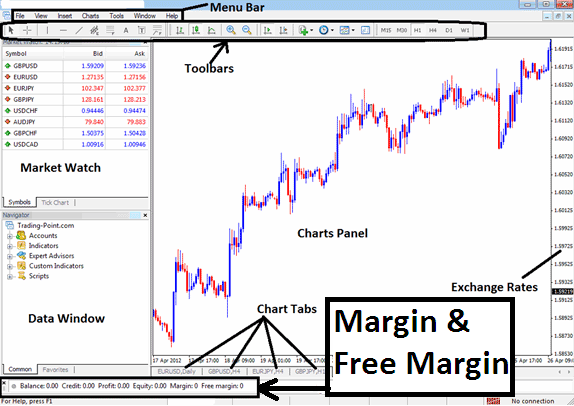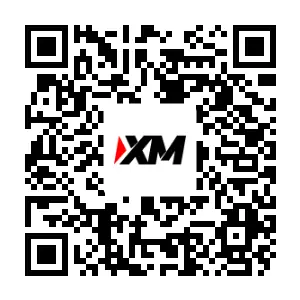Leverage and Margin Explanation and Examples
Required Margin: This signifies the capital sum a broker mandates from you to approve the activation of a trade position. It is typically expressed as a percentage value.
Equity : It's the total sum of capital you've got in your account.
Used margin refers to the portion of money in your account that has been allocated for a trading contract, which is visible in your open positions. As a trader, this amount becomes unavailable for further use once a trade is made, as it has already been committed.
Put simply, because your online broker has started a trade for you using the money they lent you, you as a trader need to keep enough money in your account to cover this borrowed amount, so you can keep using the leverage they gave you.
Available Margin: This represents the unencumbered funds within your trading account that are ready for deploying in fresh transactions. It is the capital not yet utilized to support leveraged open positions - money that hasn't been tied up by initiating a trade yet. This figure is crucial because it ensures you have the necessary resources to maintain your existing open positions, as will be further elaborated.
Conversely, excessive utilization of leverage can drive your available free margin below a specific threshold percentage. At this juncture, your online broker is algorithmically compelled to automatically or mechanically liquidate all your open positions, resulting in substantial losses. The broker intervenes by automatically closing positions because if these leveraged exposures were left active, the broker would incur the risk associated with the capital you borrowed from them.
That's why ensuring you have a lot of free margin is crucial. As a trader, avoid trading more than 5% of your account: ideally, stick to 2%.
Difference Between Leverage Set by Broker & Used Leverage
If the set stock leverage is 100: 1, it means you can borrow up to $100 for each $1 you have, but you don't have to borrow all of the $100 for each $1 you have, but you can select to borrow 50:1 or 20:1. In this instance even though the leverage ratio set 100:1 your used leverage will be the 50:1 or 20:1 that you as a trader have borrowed to make a trade.
Example:
You have $1000 dollars (Equity)
Set 100:1
Leverage Used = Amount utilized / Equity
If you buy lots equivalent to $100,000 dollars that as a trader you'll have used
= 100,000/1000
= 100:1
If you buy lots equal to $50,000 dollars which you as a trader will have used
= 50,000/1000
= 50:1
If you buy lots equal to $20,000 that you as a trader will have used
= 20,000/1000
= 20:1
In these Three cases you can see that though the set is 100:1
Typically, ratios of 100:1, 50:1, and 20:1 are utilized, determined by the size of the transactions executed.
Why not just pick the 10:1 option as the highest leverage? It is advised for traders to use even less than this to stay within the rules for proper risk management.
This question may & might seem straight forward but it is not, because when you trade you use borrowed funds referred to as Trading Leverage. When you borrow capital from anyone or a bank you as a trader must maintain security/collateral to acquire a loan, even if the security is depending and based on the monthly deductions from your wages, same thing with Stock Indices Trading.
When trading indices, the safety is known as margin, which is the funds you put down with the online company you are trading with.
This is figured out as you trade. To keep the money you borrowed, you must keep up what is called the needed amount of your own money (your deposit).
Now if Your Trading Leverage is 100:1
With $1,000 and 100:1 leverage, a $100,000 lot ties up $1,000 as margin. You risk that amount if the trade fails. The broker covers the rest and closes if margin drops.
But this is if your broker lets you trade with no margin on stock indexes before closing your trades.
If you want your trades to close automatically when you have only 20% left, your trades will close when your account has $200.
If you set a 50% threshold before your trades close automatically, then as soon as your account balance drops to $500, your trades will be closed out.
If you set a 100% requirement to close trades automatically, your position closes when the account hits $1,000. This means the stock index trade ends right away. After a 1 pip spread, your balance drops to $990. That meets the 100% rule, so positions liquidate at once.
Most online brokers do not demand full margin. Some that require 100% just do not fit you. Pick brokers with 50% or 20% margin rules. Brokers at 20% stand out as top choices. They lower the risk of closing your trades early, as the example above shows.
MT4 auto-calculates indices margin needs. A higher percentage cuts early close risks.
For Example if
Using 100:1
If the leverage is 100:1 & you trade amounts equal to $10,000 worth of goods or assets
Calculation Example: $10,000 divided by a 100:1 leverage results in $100 of used equity.
Calculation:
= Capital Used * %(100)
= $1,000/$100 * %(100)
Index Margin Requirements = 1000 %
Investor and Trader has 980 percent above requirement amount
Using 10:1
If the leverage ratio is 10:1 and your trade volume involves lots/contracts equivalent to $10,000
Using an initial capital of $10,000 with a 10:1 leverage results in $1,000 being allocated as the utilized equity base.
Calculation:
= Capital Used * %(100)
= $1,000/$1000 * %(100)
Index Margin Requirement = 100 percentage
The Investor and Trader segment possesses capital exceeding the mandated threshold by 80%.
Having elevated leverage implies a trader possesses a greater percentage of capital exceeding the minimum requirement (what is known as More "Free Margin"). This higher margin buffer reduces the likelihood of their active indices positions being forcibly closed. This is why traders sometimes elect a 100:1 leverage ratio for their accounts, though sound equity management principles dictate they refrain from trading with leverage exceeding perhaps 5:1.
These Levels are Shown on the Platform Screenshot Below as an Example:

MT4 Stock Software
Find More Instructions & Subjects:
- Ehler RVI, Relative Vigor Stock Index Indicator Analysis
- How Do You Interpret 23.6% Index Chart Fibonacci Pullback Level?
- Evening Star & Morning star candlestick patterns Described
- Study How to Trade the Hang Seng 50 Indices
- How Can I Find AS 51 on MetaTrader 5 Index Mobile App?
- How Do I Set Dow Jones 30 in MetaTrader 4 iPad Trade App?
- How to Analyze Fib Levels Index Guide
- Opening an Offline Index Chart on MT4 Trading Platform

